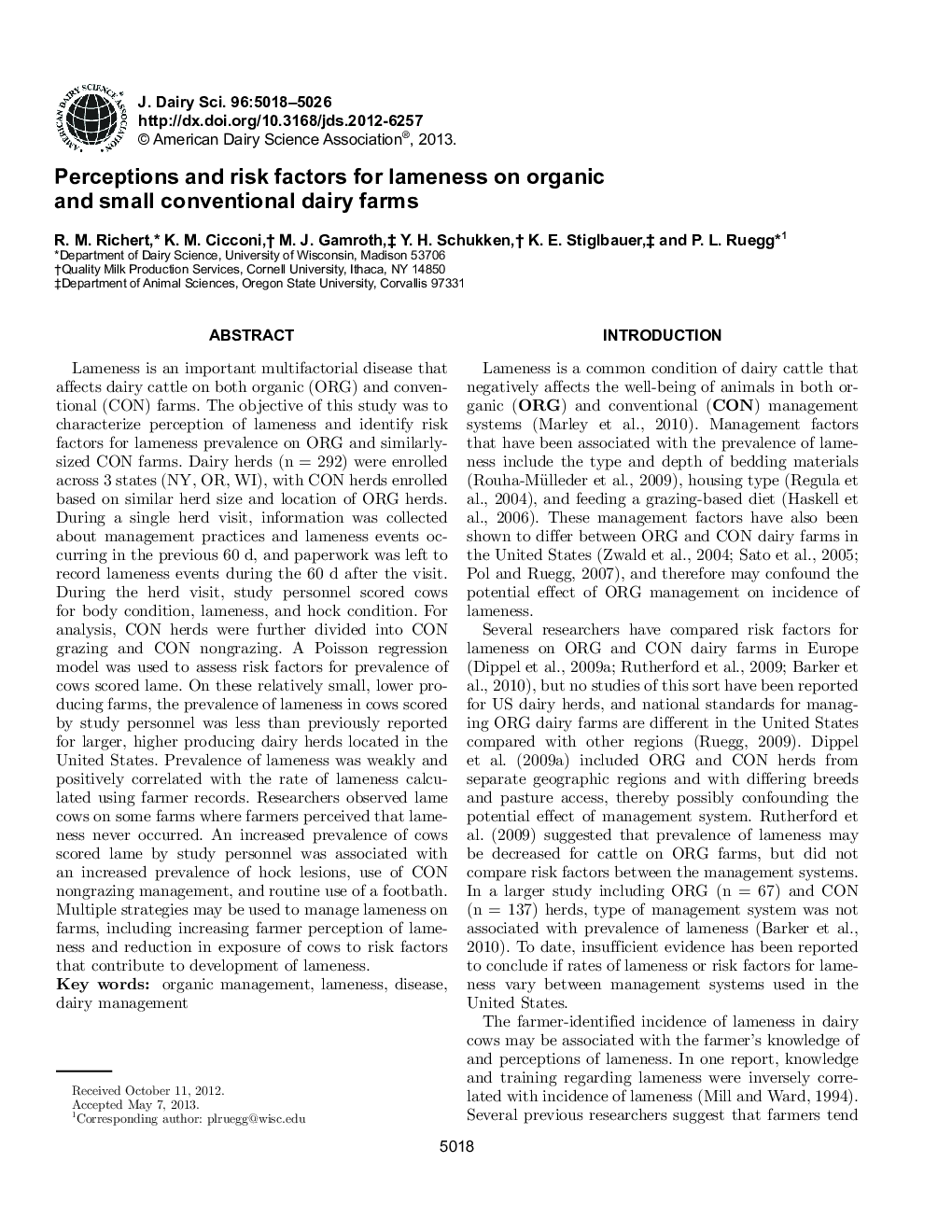| Article ID | Journal | Published Year | Pages | File Type |
|---|---|---|---|---|
| 2438882 | Journal of Dairy Science | 2013 | 9 Pages |
Lameness is an important multifactorial disease that affects dairy cattle on both organic (ORG) and conventional (CON) farms. The objective of this study was to characterize perception of lameness and identify risk factors for lameness prevalence on ORG and similarly-sized CON farms. Dairy herds (n = 292) were enrolled across 3 states (NY, OR, WI), with CON herds enrolled based on similar herd size and location of ORG herds. During a single herd visit, information was collected about management practices and lameness events occurring in the previous 60 d, and paperwork was left to record lameness events during the 60 d after the visit. During the herd visit, study personnel scored cows for body condition, lameness, and hock condition. For analysis, CON herds were further divided into CON grazing and CON nongrazing. A Poisson regression model was used to assess risk factors for prevalence of cows scored lame. On these relatively small, lower producing farms, the prevalence of lameness in cows scored by study personnel was less than previously reported for larger, higher producing dairy herds located in the United States. Prevalence of lameness was weakly and positively correlated with the rate of lameness calculated using farmer records. Researchers observed lame cows on some farms where farmers perceived that lameness never occurred. An increased prevalence of cows scored lame by study personnel was associated with an increased prevalence of hock lesions, use of CON nongrazing management, and routine use of a footbath. Multiple strategies may be used to manage lameness on farms, including increasing farmer perception of lameness and reduction in exposure of cows to risk factors that contribute to development of lameness.
